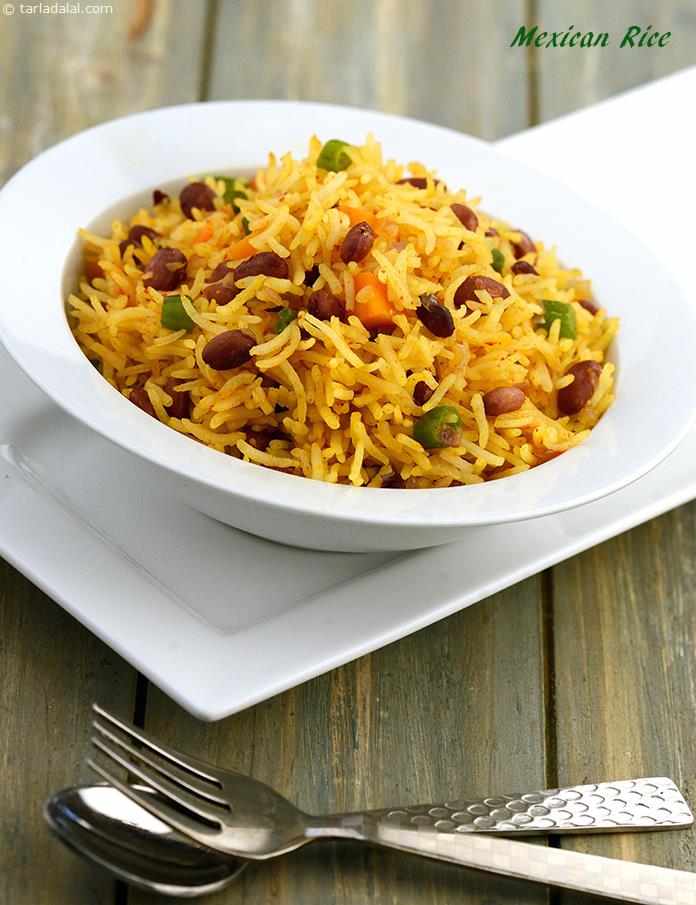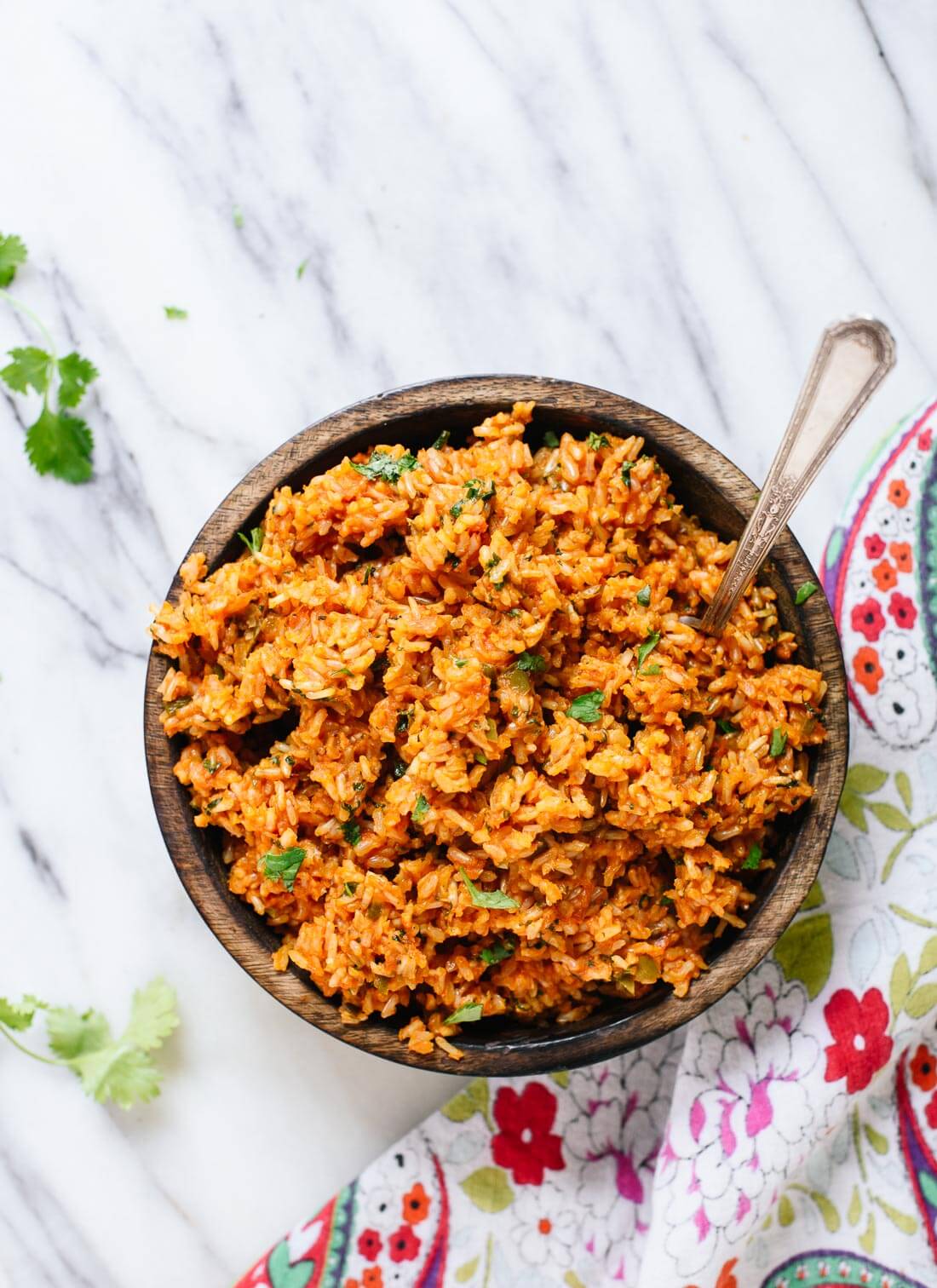Is Mexican Rice Fattening? Unraveling the Truth Behind the Calories
Mexican rice, with its vibrant colors and rich flavors, has long been a staple in many homes and restaurants. But amidst this culinary fascination, a legitimate question often arises: Is Mexican rice fattening? Does its delightful taste come with unwanted calories, and is it suitable for those who are trying to lose weight?
In today’s health-conscious society, where food choices are being scrutinized and weight management is a priority, it’s important to understand the nutritional value of popular dishes like Mexican rice. This question touches on our desire to make informed decisions about what we eat and how it affects our bodies.
In this article, we will dive deeper into the nutritional profile and calories in Mexican rice, explore whether Mexican rice is unhealthy, and answer whether it can be part of a healthy diet, particularly for those aiming to lose weight. By shedding light on these often-debated questions, we aim to equip readers with the knowledge they need to make confident food choices.
So, let’s embark on this journey to uncover the truth behind the question: Is Mexican rice good for weight loss, or should it be avoided?
What is Mexican Rice?
Mexican rice, also known as “arroz rojo” or “Spanish rice,” is a dish deeply ingrained in Mexican cuisine. It is characterized by its vibrant red color and rich flavor, making it a desirable addition to many Mexican-inspired dishes. But one thing that often concerns health-conscious eaters is whether Mexican rice contributes to weight gain, or if it can be enjoyed without worries.
Ingredients and Cultural Significance
Typically, Mexican rice is made using long-grain white rice, cooked in various ways to enhance its flavor and texture. Some common ingredients include:
- Tomatoes or tomato sauce, which give the dish its distinctive red hue and tangy flavor.
- Onions and garlic for added depth and richness.
- Chicken broth, which is often used as the cooking liquid, adds a savory undertone.
- Spices, including cumin, chili powder, and paprika, contribute to the warm and slightly smoky flavor profile.
- Peas and carrots, which are sometimes included to enhance the texture and color.
Popular Variations of Mexican Rice
While these are the typical ingredients, there are many variations of Mexican rice depending on regional preferences and family recipes:
- Vegan Mexican Rice: This version swaps out chicken broth for vegetable broth, making it suitable for vegans and vegetarians.
- Spicy Mexican Rice: Adding jalapeños, chili powder, or hot sauce can elevate the heat level, making it a fiery delight.
- Tex-Mex Mexican Rice: This variant incorporates corn, black beans, and bell peppers for a more hearty, Tex-Mex twist.
- One-Pot Mexican Rice: Cooking everything together in a single pot simplifies preparation and allows the flavors to meld beautifully.
Despite these variations, Mexican rice remains a versatile and flavorful dish that pairs perfectly with many Mexican and Tex-Mex meals. But for those wondering, is Mexican rice unhealthy, or can it fit into a health-conscious diet? Let’s look at the facts.
Nutritional Profile: Is Mexican Rice Fattening?
To answer the question, is Mexican rice fattening, it’s essential to understand its nutritional breakdown and how it compares to other types of rice.
Macronutrient Breakdown
Mexican rice is predominantly composed of carbohydrates, which serve as a primary source of energy for the body. Let’s break down the key nutritional components:
- Calories: A typical serving of Mexican rice (1 cup cooked) contains approximately 200 calories.
- Carbohydrates: The majority of the calories come from carbohydrates, with about 40 grams per serving.
- Fat: Mexican rice is generally low in fat, providing only 2-3 grams per serving, depending on how much oil or fat is used during cooking.
- Protein: The protein content is moderate, typically ranging between 4 and 6 grams per serving.
While Mexican rice isn’t particularly high in fat, the question is Mexican rice good for weight loss can depend on the preparation methods and portion sizes, both of which significantly affect its overall calorie content.
Factors Affecting the Calorie Content of Mexican Rice
The way Mexican rice is prepared plays a key role in determining its calorie count and whether it can be considered fattening.
The Role of Oil, Cheese, and Other Additives
Many recipes for Mexican rice include additional ingredients like oil, cheese, and even butter, which can increase its calorie content.
- Oil: The type and amount of oil used for sautéing the rice or vegetables directly impact the fat and calorie count. Recipes that call for more oil will naturally have higher calorie content.
- Cheese: Adding cheese is another common variation, but this can significantly raise the fat content. While it adds a creamy texture and delicious flavor, too much cheese may contribute to weight gain if consumed frequently.
Portion Size and Serving Recommendations
Portion size is another critical factor when determining whether Mexican rice is fattening. Eating large portions can lead to excess calorie consumption, contributing to weight gain over time. To avoid this, it’s advisable to stick to a standard serving size of around 1 cup of cooked rice per meal.
Pairing Mexican rice with lean proteins, such as grilled chicken or beans, and adding plenty of vegetables can create a more balanced meal. This can help control calorie intake and promote fullness, reducing the likelihood of overeating.
The Impact of Cooking Methods on Calories
The method used to prepare Mexican rice can influence its overall calorie content. Traditional recipes often involve frying the rice in oil before adding broth and other ingredients. This process can add unnecessary fat and calories to the dish.
To make Mexican rice healthier:
- Use minimal oil or switch to a healthier option like olive oil.
- Non-stick cookware can reduce the need for added fats.
- Broth-based cooking: Simmering rice in broth instead of frying it in oil can cut down on the fat content.
- Consider adding extra vegetables for a nutritional boost without adding significant calories.
For those concerned about weight, is Mexican rice good for weight loss? The answer lies in how it’s prepared and consumed. By opting for healthier preparation methods and controlling portion sizes, Mexican rice can be part of a balanced, weight-conscious diet.
Calories in Mexican Rice and Their Effect on Weight
Understanding how excess calories affect your body is essential when addressing whether Mexican rice can lead to weight gain.
How Excess Calories Contribute to Weight Gain
Weight gain typically occurs when calorie intake consistently exceeds the body’s energy needs. Foods that are high in calories, particularly from fats or sugars, can contribute to an energy surplus, leading to gradual weight gain if not managed.
Mexican rice, while not inherently fattening, can contribute to an increased calorie intake when consumed in large portions or prepared with high-fat ingredients. But consuming it as part of a balanced diet—along with lean proteins and fiber-rich vegetables—can help mitigate these effects.
Mythbusting: Is Mexican Rice Unhealthy?
There’s a common myth that carbohydrates, such as those found in rice, are the sole cause of weight gain. However, the reality is more complex. Carbohydrates are an essential macronutrient that provides energy. When consumed in moderation and balanced with other nutrients, carbohydrates from foods like Mexican rice can fit into a healthy diet.
Research and Analysis: Is Mexican Rice Good for Weight Loss?
Several studies have explored the relationship between rice consumption and weight. While some findings suggest that rice consumption is associated with higher calorie intake, the results also emphasize that weight gain is not directly tied to specific foods but rather overall dietary patterns.
Studies on Cereal Intake and Weight
- One study published in the Journal of the American Dietetic Association found that Mexican rice, when consumed as part of a balanced diet, did not directly lead to increased body weight, especially when other dietary factors were considered.
- Another study in the European Journal of Nutrition examined the glycemic load of rice-based dishes, including Mexican rice. The study found that Mexican rice has a moderate glycemic index, meaning it doesn’t drastically spike blood sugar levels, making it a reasonable choice for weight management when eaten in moderation.
Further Considerations
While research suggests that Mexican rice can fit into a balanced diet, individual preferences, portion control, and cooking methods ultimately determine whether it supports or hinders weight loss efforts.
Conclusion: Is Mexican Rice Fattening?
So, is Mexican rice fattening? The answer depends on how it’s prepared and the portions you consume. While it may contain more calories than plain rice due to added ingredients like oil and vegetables, Mexican rice can be part of a healthy, balanced diet when enjoyed in moderation.
For those wondering, is Mexican rice unhealthy, it doesn’t have to be. By using healthier preparation methods and controlling portion sizes, you can enjoy Mexican rice without guilt. With mindful eating habits, Mexican rice can be part of a nutritious diet that supports your health and weight management goals.


